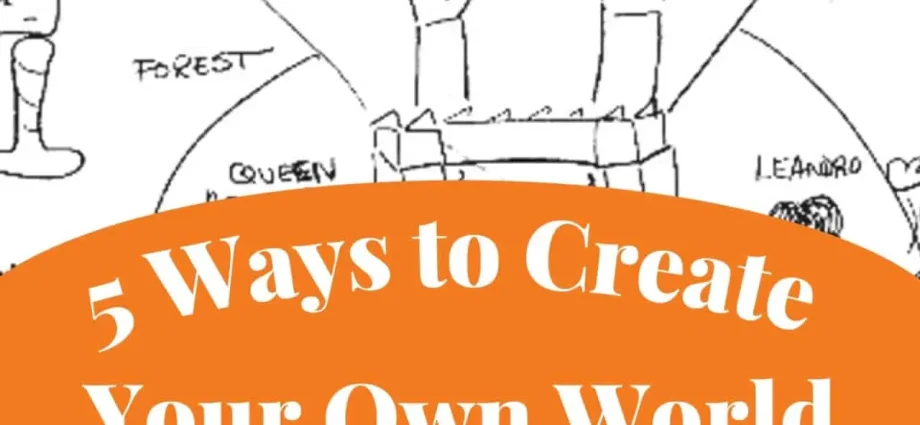Is it necessary to develop a child’s imagination? After all, it is naturally quite lively and bright. Rather, it can and should be directed in the right direction. Psychologist Natalya Gorodulina tells how to do this.
Imagination is the ability of the brain to create an image of something that is not yet there. Everything that exists in our world first appeared as an idea in someone’s head. The development of civilizations is due to the fact that we can imagine. Therefore, it is so important to support in the child the desire to fantasize, invent, develop ideas and bring them to life. Here are 5 ways to do it.
1. Turn boredom into a game. Imagination is good because it can help out in any situation. For example, you can have fun with your child even in a boring line at the clinic if you come up with a funny word game.
For example, take a line from the famous song “Captain, captain, smile” and come up with as many options as possible for what else the captain can do: “Captain, captain, comb your hair, pull yourself up.”
Or you can play the game «Guess the fairy tale» (song, cartoon, and so on). One in the title reverses all the words, and the other guesses what it is. For example, «A wolf and seven kids» turn into «A goat and seven cubs.» And be sure to switch roles so that the child actively turns on the imagination, and does not remain in the passive role of a guesser.
2. Watch cartoons together. Watching a cartoon with your child can be an important resource for a family.
Firstly, it brings together, children appreciate when mom and dad share their interests and hobbies. Secondly, you can quietly diagnose and see in which direction his fantasy is directed. Watching how a child talks about characters, one can understand with whom he associates himself, how this character is close to him, what common problems, strengths and weaknesses they have.
You can ask: “Why do you think he did this? Did this act help him? How could it have been done differently?» When a parent discusses the plot of a cartoon with a child, he can unobtrusively indicate «what is good and what is bad.»
It is easier for a child to accept such discussions, he feels safe, but at the same time he catches parental messages and tries them on. And when the mother describes the desired behavior of the cartoon character, the child forms an image of how to act in a similar situation in life.
3. Show your child what he likes. You can often hear: «Oh, these modern cartoons, or something before.» In fact, modern cartoons are no worse and no better than the old ones — they are just different, because modern children are also different.
If, for example, children once watched a cartoon about a seven-flowered flower and imagined what they would do if they had the same flower, now they rather want to be like Ben Tennyson from the Cartoon Network cartoon «Ben 10» and rely not for a limited number of desires, but for their own ingenuity, friends — and a gadget, because this is close to modern children who deal with phones and tablets from an early age.
Let the child have a green sun in the picture and pink grass — there is nothing wrong with that
Not only plots are changing, but also the visual component — today children want to see a bright, dynamic picture, because the information processing speed of the modern young generation is quite high.
So there is no need to sigh that today the cartoons are no longer the same — yes, they are not the ones that we had, but they are exactly the ones that today’s children need. And if you watch them together and show a sincere interest in your favorite characters, this will undoubtedly help you get closer.
4. Don’t impose an adult vision. Children’s imagination is limitless. Children still do not have clear logical connections, knowledge about the world, about natural phenomena, and so on. They can make ridiculous generalizations, ridiculous conclusions, which amuse adults.
It is important not to rush to convey your adult vision to them. Let the child have a green sun in the picture and pink grass — there is nothing wrong with that. I would even recommend that adults join this process and, together with the child, draw the world in reverse. Flying fish and floating cows, for example.
Or invite the children to tell fairy tales in reverse: «There was a boy, and his name was Cinderella, and he had an evil stepfather and 2 evil brothers.» And the children will not be stopped, they will continue your version with laughter, and then they will come up with ten more of their own, in which the evil Cinderella will torment the poor stepmother.
5. Provide experiences. For the development of imagination, it is important that the child has a rich and varied experience. In his games, the child depicts the world that he sees around. If you take him to the zoo — he will play in the zoo, if you take him to the station, show and tell about trains — he will play trains.
In other words, the more impressions a child receives, the more fuel his imagination has, the more games, stories he can come up with. The second important condition is the company of peers. It is very important that children can play with each other, learn to communicate, negotiate and organize a common game. In a word, create the right soil for the development of imagination, and then the children will cope on their own!










